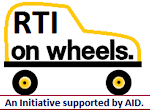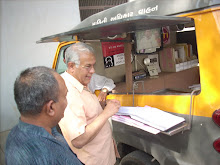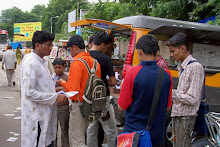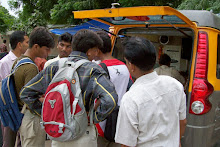Financial
Express: Opinion: Friday, May 10, 2019.
I
will not share any data on the coverage of beneficiaries till you are able to
show me a letter from higher authorities” was the prompt response of a district
social welfare officer to our request for data related to nutrition schemes.
This reluctance to share data by a government official at the district level in
India is not a new phenomenon, and it was not the first time we got such a
response. But, as development practitioners working on implementation of
nutrition programmes at the community level, the data we require to design our
programmes should be no secret. This is reinforced by Section 4(1) of the Right
to Information (RTI) Act, 2005.
This
incident not only urged us to think about the importance of transparency of
data related to government schemes and programmes, but more specifically on
data related to nutrition and the Integrated Child Development Services (ICDS)
scheme, which is aimed at improving nutrition intake of children till six years
of age, and also pregnant and lactating mothers.
Once
we moved beyond this incident, there was a challenge not much has been written
about the transparency of the ICDS data. A rare but thought-provoking mention
has been made by Venkatesan Ramani, a retired IAS officer of the Maharashtra
cadre, in a policy document titled ‘Fixing Child Malnutrition in India: Views
from a Public Policy Practitioner’. It mentions that the ICDS Monthly Progress
Report that is collated in every state from every Anganwadi Centre (AWC) has
relevant information on the coverage of beneficiaries as well as weight of
children under five for each AWC. But, unfortunately, it is not easily
available. Further, Ramani makes a valid point that lack of access to data for
interested stakeholders results in the absence of public accountability and has
huge implications on policy implementation.
Before
we get on to the issue of public accountability, there is a hurdle, i.e. there
isn’t enough information and data available in the public domain for us to
understand the nutritional status and effectiveness of nutrition-related
schemes of a particular district, block or village. The government, on its
part, collects a range of information including the number of beneficiaries,
their nutritional status and variances in coverage across villages and social
groups like scheduled castes and scheduled tribes. But this local level data is
not available in public domain. While one can argue that there are large
nutrition surveys like the National Family Health Survey, but unfortunately
their design does not capture locally-relevant information and it is not
real-time.
Ideally,
the ICDS data on target beneficiaries, people reached, services offered and
funding for different services should be available at all levels of service
delivery. Relevant break-up at each level including state, district, block and
gram panchayat should give a holistic picture for decision-makers. Also,
communities at village level should have access to the data relevant to their
AWC, so they are aware of the beneficiaries, their entitlements as well as the
nutritional status of women and children. This will help take forward the
dialogue between service providers and the community, generate demand, and improve
service delivery.
The
ICDS scheme needs to emulate MGNREGA in this regard, in which the principles of
transparency and accountability are ingrained through proactive disclosure of
information at all levels of scheme delivery, social audits and grievance
redressal. This is evident from their management information system NREGAsoft that
makes information readily available from the national to the beneficiary level,
on every aspect of the scheme and is real-time. Information is also made
available to public at community level through display boards and wall
paintings under MGNREGA.
As
a country that is aiming to end all forms of malnutrition by 2030 and has been
on a successful path of reducing undernutrition, India is still faced with
certain challenges holding us back from achieving our targets. Higher
malnutrition prevalence in certain marginalised populations including the STs
is one of the biggest challenges.
Transparency
of data can be a huge support to governments to identify vulnerable geographies
and populations, evaluate schemes, and come up with new innovations. But, most
importantly, transparency of this data can support communities to engage with
an issue like malnutrition and hold service providers accountable, which will
improve service delivery. We also hope that, one day, instead of struggling to
access ICDS data, our struggles will focus on analysing that data to find
solutions.
(Authors
work with IPE Global on the Matrix of Change for Nutrition programme. Views are
personal)














































































